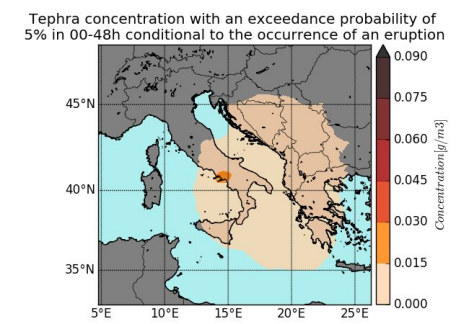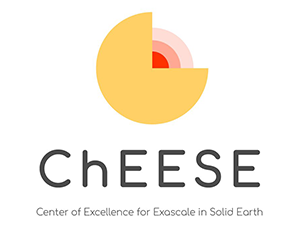Probabilistic Volcanic Hazard Assessment (PVHA)
Short description
Results & Achievements
Objectives

Technologies
Workflow
PVHA_WF_st fetches the monitoring data (seismic and deformation) and, together with the configuration file of the volcano, calculates the eruptive forecasting (probability curves and vent opening positions) and uses the output file from alphabeta_MPI.py to create the volcanic hazard probabilities and maps.
PVHA_WF_lt uses the configuration file of the volcano to calculate the eruptive forecasting and, together with the output file from alphabeta_MPI.py, creates the volcanic hazard probabilities and maps.
Meteo data download process is fully automated. PVHA_WF_st and PVHA_WF_lt connect to the Climate Data Store (Copernicus data server) and download the meteorological data associated with a specified analysis grid. These data will later be used to obtain the results of tephra deposition by FALL3D.
Software involved
Use Case Owner
Laura Sandri
INGV Bologna
Collaborating Institutions
INGV
BSC
IMO

